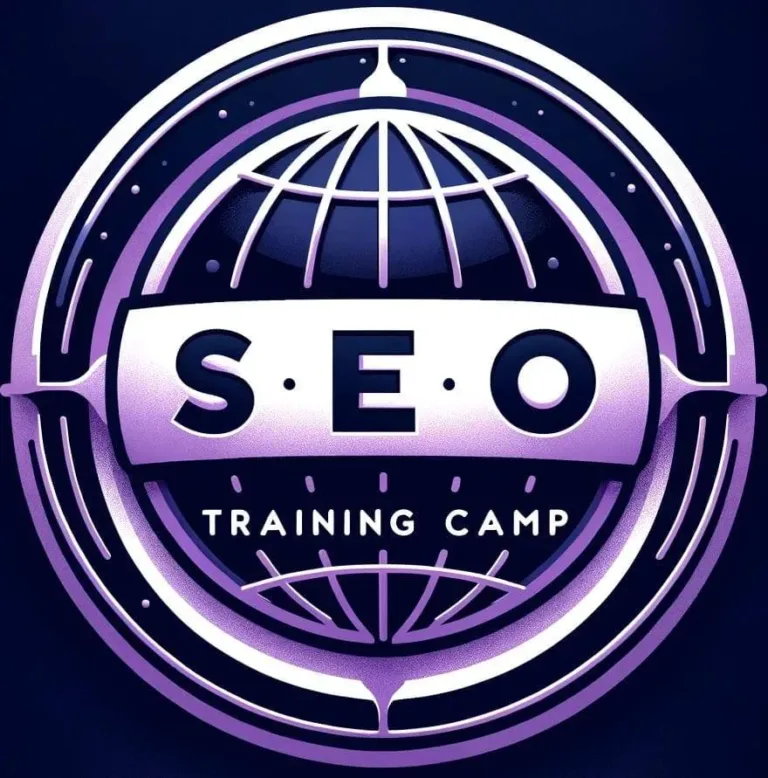Heading vectors are fundamental SEO elements that establish content hierarchy and boost search engine understanding through semantic signaling. They operate through H1-H6 tags to create structured information pathways, improving user experience and algorithmic comprehension. Effective heading implementation directly impacts search visibility, with proper hierarchical sequences and keyword optimization driving ranking performance. Technical factors like 70-character H1/H2 tags limitations, LSI keyword integration, and schema markup amplify content visibility. Strategic heading structures support crawlability, reduce bounce rates, and increase engagement metrics. Modern SEO practices increasingly utilize AI-driven analytics and natural language processing to maximize heading effectiveness across search platforms. Exploring these optimization techniques reveals powerful strategies for improved search performance.
Learn More
- Heading tags create hierarchical vectors that signal content structure and importance to search engine algorithms.
- Sequential H1-H6 tags establish clear navigation pathways that improve SEO performance and user experience.
- Proper heading hierarchy enhances crawlability and increases the likelihood of featured snippet selection in search results.
- Schema markup and semantic heading structures amplify content visibility in search engine rankings.
- Technical optimization of heading tags, including 70-character limits for H1/H2, supports effective algorithmic understanding.
Understanding Heading Tags
Heading tags serve as the blueprint of webpage content, establishing a clear hierarchical structure that improves user experience and search engine optimization.
These HTML elements, ranging from H1 to H6, create a logical content hierarchy that search engines and users rely on to comprehend the relative importance of different content sections. CSS styling can be applied to customize the visual appearance of heading tags. Maintaining clear, concise language in headers ensures optimal comprehension and engagement. Action-oriented language helps create more engaging and effective headers.
The H1 tag is the primary heading, functioning as the page’s main title and central theme indicator. Search engines place significant weight on H1 tags, making them critical for establishing content relevance and framework.
Best practices dictate using only one H1 tag per page, ensuring it contains relevant keywords while maintaining natural readability.
Subsequent heading levels (H2 through H6) create a systematic content structure, with H2 and H3 tags commonly serving as major section dividers and subsection markers.
This hierarchical arrangement must maintain sequential integrity, avoiding gaps between heading levels to preserve logical flow and accessibility standards. Screen readers depend heavily on this structured approach, making proper heading implementation essential for inclusive web design.
The strategic implementation of heading tags directly impacts SEO performance by providing clear semantic signals to search algorithms.
When properly structured, these tags amplify content organization, improve crawlability, and increase the likelihood of securing featured snippets in search results.
Modern search engines analyze heading structure to determine content relevance and topical relationships, making proper heading implementation a fundamental aspect of technical SEO optimization.
SEO Ranking Factors

Three primary categories of SEO ranking factors shape a website’s position in search engine results: content quality, technical optimization, and domain authority. Each category plays an indispensable role in determining how search engines evaluate and rank web pages, with content quality remaining the foundational element of SEO success. Maintaining consistently updated content helps websites establish subject matter expertise and improve rankings.
| Factor Category | Key Components | Impact Level |
|---|---|---|
| Content Quality | Relevance, Length, LSI Keywords | High |
| Technical SEO | Page Speed, Mobile-First, SSL | Medium |
| Domain Authority | Backlinks, Age, E-A-T | Medium-High |
Content quality encompasses multiple elements, including relevance to search intent, all-encompassing coverage of topics, and proper implementation of LSI keywords. High-quality content that addresses user needs consistently ranks better in search results, particularly when it demonstrates proficiency, authoritativeness, and trustworthiness (E-A-T). Properly implementing structured data markup enhances search engines’ understanding of content context and meaning. Content should exceed 1,890 words for comprehensive topic coverage and optimal search engine visibility.
Technical optimization factors focus on the website’s infrastructure and performance metrics. Core Web Vitals, mobile friendliness, and secure HTTPS protocols significantly influence rankings. Website loading speed, particularly on mobile devices, has become increasingly important as Google emphasizes user experience in its ranking algorithms.
While not directly controllable, domain authority factors develop over time through consistent quality signals. These include authoritative backlinks, positive user engagement metrics such as click-through rates and dwell time, and overall domain age. While newer websites can achieve high rankings through exceptional content and technical optimization, established domains often have an inherent advantage in competitive search results.
Implementing Effective Heading Hierarchies

Effective heading hierarchies form the backbone of page content organization, and research shows that they directly impact user engagement and search engine crawlability.
The strategic implementation of multi-level headers (H1 through H6) creates a clear content flow that guides visitors through the information designer while signaling content importance to search algorithms. Primary H1 tags should be limited to one per page to maintain a clear topical focus and avoid confusion for users and search engines. Natural keyword placement in headers helps optimize content while maintaining readability and user experience. Screen reader compatibility must be ensured through proper HTML heading elements rather than styled text.
Data indicates that properly structured heading hierarchies can improve time-on-page metrics by up to 43% when headers accurately reflect the logical progression of topics and subtopics within the content.
Prioritizing Page Content Flow
Adequately structured content hierarchies are the backbone of successful SEO and user experience, with heading tags critical in organizing information flow.
Strategic implementation of H1 through H6 tags creates a logical progression that guides users and search engines through the content’s narrative structure.
Natural language readability must be maintained when incorporating keywords into headings.
Effective content flow prioritization requires precise attention to heading sequence and semantic relevance. Each heading must clearly describe its subsequent content while maintaining keyword optimization without compromising readability.
By following a sequential hierarchy—starting with a single H1 tag and progressing through H2s and H3s—content becomes more accessible to screen readers and amplifies the overall user experience.
Content wayfinding becomes intuitive when headings are strategically positioned to create clear section breaks and topical transitions. This systematic approach not only improves scannability but also increases the likelihood of securing featured snippets in search results.
The structured outline created by properly implemented heading tags serves dual purposes: it provides semantic signals to search engines while offering users a clear roadmap of the content’s organization.
This methodology supports technical SEO requirements and user-centric design principles, conclusively driving better engagement metrics and search visibility.
Optimizing Multi-Level Headers
Building a holistic multi-level header structure is critical to both technical SEO and user experience optimization.
The foundation begins with a single H1 tag establishing the primary topic. It is followed by strategically placed H2 subheadings every 200-500 words to segment core content elements. H3 tags further break down specific details while maintaining a clear hierarchical flow. Proper content organization and readability improve how search engines interpret and rank the page.
Google now understands semantic context beyond simple keyword placement in headers.
Effective header optimization requires balancing search engine requirements and user navigability. Proper heading structure implementation is also crucial for screen reader accessibility.
Headers must incorporate relevant keywords naturally while avoiding keyword stuffing, adhering to HTML5 standards, and maintaining consistent formatting throughout the document.
Each webpage should feature unique H1 tags, with H2 tags potentially incorporating long-tail keywords to amplify featured snippet opportunities.
The implementation of proper heading hierarchies demands strict adherence to structural guidelines.
This includes never skipping heading levels, ensuring descriptive language communicates content purpose, and maintaining semantic signals that help search engines understand content relationships.
Following Google’s guidance on header implementation while prioritizing user experience creates an optimal balance between technical SEO requirements and practical content accessibility.
Keywords in Heading Optimization

Strategic keyword placement in heading tags forms the backbone of successful SEO optimization, directly influencing how search engines interpret and rank content.
The systematic incorporation of primary keywords in H1 tags, variations in H2 tags, and secondary keywords in lower-level headings creates an all-encompassing keyword distribution that amplifies search visibility and algorithmic understanding. Multiple H2 tags are especially beneficial for organizing lengthy content into distinct, keyword-optimized sections.
Long-tail keywords are pivotal in heading optimization, particularly targeting specific search intents. Cross-browser compatibility must be verified to ensure heading tags display correctly across all platforms and devices.
Content creators can use tools like the Keyword Magic Tool to identify relevant secondary keywords and semantic variations, moving beyond simple keyword density to establish situational relevance.
This approach aligns with modern search engine algorithms prioritizing semantic understanding over keyword frequency.
Implementing keywords in headings must maintain a delicate balance between optimization and user experience.
Descriptive headings incorporating target keywords help search engines understand content relevance while ensuring user readability.
This dual-purpose approach supports SEO performance and user engagement metrics, contributing to lower bounce rates and improved search rankings.
To maximize heading optimization, focus on incorporating keywords that align with Google’s Search Quality Evaluator Guidelines.
This includes structuring headings to target featured snippets by addressing specific queries and maintaining semantic relevance throughout the content hierarchy.
The strategic placement of keywords in heading tags, proper hierarchical structure, and descriptive clarity create a sturdy blueprint that bolsters search engine visibility and user navigation proficiency.
Common Heading Structure Mistakes

While optimizing headings with keywords enhances SEO performance, many content creators undermine their efforts through fundamental structural mistakes.
The most prevalent issues include incorrect sequential ordering, overuse of heading tags, poorly descriptive content, and inconsistent structural hierarchy, which can significantly impact search engine rankings and user experience. Using CSS styling instead of heading tags for visual formatting is essential, as the proper semantic structure should drive heading choices. Headers must be crafted to remain legible when users magnify their screens up to 200%.
One critical error is the non-sequential use of heading tags, such as jumping from H1 to H4 without intermediate levels. This interrupts the logical flow of information and creates accessibility challenges for screen readers. Clear navigation hierarchies must be established to guide search engines and visitors effectively.
Additionally, implementing multiple H1 tags on a single page confuses search engines about the primary topic, diluting the content’s SEO value.
Content creators often use generic or vague headings like “More” or “About,” which provide insufficient background for users and search engines.
Effective headings must clearly describe the subsequent content while maintaining conciseness. Moreover, the overuse of heading tags within confined content sections and keyword stuffing in headers can trigger negative SEO signals.
Maintaining a consistent heading structure is paramount for SEO success. The proper implementation follows a logical hierarchy: H1 for the main topic, H2 for subtopics, and H3 for further subdivisions.
This systematic approach enables search engines to crawl effectively and index content while improving user exploration. When heading tags are used inconsistently or primarily for visual styling rather than structural purposes, the content’s organizational clarity suffers, potentially leading to reduced search engine rankings and compromised user engagement.
Accessibility and Heading Design

Proper heading design serves as a critical accessibility foundation, enabling screen readers to navigate content effectively while providing essential structure for users with visual and cognitive disabilities.
Research shows that well-structured headings significantly improve content comprehension rates, with users reporting up to 47% faster wayfinding when clear heading hierarchies are implemented. Single h1 tags must be used per webpage to establish proper document structure. The implementation of accessible heading design directly impacts user engagement metrics, as properly structured headers support assistive technologies and elevate overall content findability and SEO performance through improved semantic markup. Creating proper heading structures also helps search engines better understand content context through semantic HTML markup, which enhances overall website crawlability and indexing.
Accessible Design Elements
Accessibility in web design extends far beyond mere compliance, serving as a cornerstone for creating inclusive digital experiences that benefit all users.
Key accessible design elements include clear layouts with consistent wayfinding, high-contrast components, and semantic HTML implementation that boosts both user experience and search engine understanding.
Critical design considerations encompass keyboard accessibility for all interactive elements, properly structured forms with clear labels, and well-organized tables that accommodate assistive technologies.
Alternative text for images, descriptive anchor text, and holistic video transcripts secure content accessibility across different user needs. Integrating XML sitemaps and exploratory wayfinding further strengthens accessibility and SEO performance.
Mobile accessibility demands particular attention through responsive design implementation, touch-friendly features, and fine-tuned loading speeds.
These elements and healthy Core Web Vitals contribute to superior search engine rankings. Systematically implementing heading structures, readable content, and descriptive title tags creates a symbiotic relationship between accessibility and SEO objectives.
This approach amplifies current user engagement and future-proofs websites against shifting accessibility-related ranking factors.
Navigating Through Headers
Websites can simultaneously improve user wayfinding and search engine comprehension by strategically implementing heading structures. Proper heading hierarchies serve as directional landmarks, enabling users and search crawlers to parse content relationships and information blueprints efficiently.
| Heading Level | Primary Purpose | Best Practices |
|---|---|---|
| H1 | Main Topic | Single-use per page, 50-70 characters |
| H2 | Major Sections | Include long-tail keywords naturally |
| H3 | Subsections | Support H2 topics with specifics |
| H4 | Detailed Points | Use when necessary for deeper structure |
Research indicates that well-structured headings directly impact user engagement metrics and accessibility compliance. Screen readers rely on sequential heading implementation (H1 through H6) to convey content hierarchy to visually impaired users. While heading tags aren’t direct ranking factors, Google’s algorithms analyze them to understand the content environment and topical relevance.
To maximize heading effectiveness, maintain consistent formatting, incorporate relevant keywords naturally, and validate descriptive clarity. Each heading should provide value by accurately reflecting its subsequent content, creating a logical flow that guides users through the information blueprint while reinforcing semantic relationships for search engines.
Search Engine Crawling Patterns

The intricacy of search engine crawling patterns forms the foundation of effective content unearthing and indexation.
Through systematic approaches like depth-first and breadth-first crawling, search engines methodically uncover, fetch, parse, render, and index web content. This multi-stage process guarantees all-encompassing coverage while maintaining efficiency in resource allocation.
Search engines employ sophisticated algorithms to determine crawl frequency and priority, modifying their behavior based on server responses and content update patterns.
The process begins with exploration, where crawlers identify new or modified content through various channels, including sitemaps and internal linking structures.
Key components of modern crawling patterns include:
- Exploration crawls for identifying new content and refresh crawls for updating existing pages
- Mechanized link extraction and queue management for systematic content exploration
- JavaScript rendering capabilities to process fluid content accurately
- Intelligent crawl rate adjustment based on server response and HTTP errors
- User-agent identification for proper crawler recognition and handling
Understanding these patterns is essential for optimizing content visibility.
When crawlers encounter well-structured websites with clear route hierarchies, they can process and index content more effectively. This efficiency directly impacts how quickly new or updated content becomes available in search results.
The effectiveness of crawling patterns relies heavily on technical implementation.
Proper HTML markup, responsive server behavior, and strategic internal linking contribute to optimal crawling performance.
Technical SEO Best Practices

Implementing clear, concise URL structures with descriptive keywords and logical hierarchies directly impacts search engine crawling efficiency and user comprehension.
Technical schema integration amplifies search result visibility by providing search engines with structured data that defines content relationships and frameworks.
When properly configured, these technical SEO elements create a foundation for improved organic search performance and higher click-through rates from search engine results pages.
Optimize URL Structure
Proper URL structure is a cornerstone of effective technical SEO, directly impacting user experience and search engine crawlability.
Implementing descriptive URLs with strategic keyword placement boosts search visibility while maintaining clear route paths for users. The optimal approach involves using hyphens to separate words, avoiding unnecessary parameters, and keeping URLs concise yet meaningful.
- Use descriptive URLs that indicate page content and purpose
- Place relevant keywords at the beginning of URLs for maximum SEO impact
- Separate words with hyphens, avoiding underscores or spaces
- Maintain short, simple URL structures for improved user experience
- Implement 301 redirects when changing URLs to preserve SEO value
Technical considerations demand static URLs over fluid ones, which are more understandable for users and search engines.
Implementing a hierarchical category structure for larger websites strengthens site design while improving crawlability. Avoid keyword stuffing and limit subdomain usage unless absolutely necessary.
The focus should remain on creating clean, readable URLs that effectively communicate page content while supporting broader SEO objectives through proper formatting and strategic keyword incorporation.
Technical Schema Integration
Beyond optimizing URL structures, technical schema integration is a powerful improvement to modern SEO strategy, enabling search engines to understand better and interpret webpage content.
This structured data markup heightens search result appearances and drives higher click-through rates through rich snippets and amplified SERP features.
Implementation begins with basic schema types to establish a foundation, utilizing specialized tools like SearchAtlas and MetaSync for WordPress to optimize the integration process.
Regular validation through Google’s Structured Data Testing Tool confirms accuracy and eligibility for rich results, while monitoring helps maintain compliance with shifting search engine requirements.
Common implementation challenges include intricate difficulties in code application and selecting appropriate schema types for different content elements.
Success requires a systematic approach, starting with fundamental schemas, validating markup accuracy, and systematically expanding implementation across various content types.
The integration process must align with broader SEO objectives, confirming schema markup complements existing keyword optimization efforts and content quality standards.
Through careful implementation and regular maintenance, schema markup is a pivotal technical SEO component that amplifies content visibility and search engine interpretation.
Content Structure and Rankings

Websites can significantly influence their search engine rankings and user engagement metrics through strategic content structuring and heading implementation.
The hierarchical organization of content using H1 through H6 tags is critical in search engine comprehension and user exploration. A single, well-optimized H1 tag containing the primary keyword establishes the main topic, while subsequent heading levels create a logical content structure that search engines can effectively crawl and index.
Critical elements for optimizing heading structure include:
- Sequential implementation of H2-H6 tags for clear content hierarchy
- Strategic keyword placement within headings for amplified relevance
- Character limitation of 70 for H1 and H2 tags to maintain conciseness
- Consistent heading patterns throughout the content
- Integration of descriptive, user-focused heading text
Properly structured headings have an impact beyond technical SEO benefits. Analytics data shows that well-organized content typically experiences lower bounce rates and increased user engagement.
This correlation stems from improved content accessibility and scanning capability, which allows users to locate relevant information quickly. Moreover, strategic heading implementation amplifies opportunities for featured snippet acquisition, particularly when headings are structured to address specific user queries.
Headings must balance keyword optimization with user experience considerations for maximum SEO effectiveness. This approach supports search engine understanding and facilitates content consumption across all user segments, including those utilizing screen readers or other assistive technologies.
The result is a sturdy content structure that serves technical SEO requirements and user accessibility needs.
Future of Heading Tags

In the rapidly shifting terrain of SEO, heading tags are undergoing significant modification driven by artificial intelligence, voice search optimization, and upgraded natural language processing capabilities. The integration of AI in title tag optimization has shown extraordinary growth, with 84% of marketers utilizing AI in their marketing efforts by 2020, compared to just 29% in 2018.
| Evolution Factor | Impact on Heading Tags |
|---|---|
| AI Integration | Real-time optimization and refined click-through rates |
| Voice Search | Modification to interactive queries |
| NLP Technology | Improved semantic understanding and situational relevance |
The future of heading tags extends beyond traditional keyword placement, focusing instead on user intent and situational relevance. Google’s emphasis on accessibility and user experience over strict hierarchical ordering signals a fundamental shift in how heading tags contribute to SEO performance. This modification aligns with the growing importance of voice-activated searches and the need for a more natural, interactive content structure.
As search engines increasingly understand situations and user intent, heading tags must evolve to accommodate semantic search principles and natural language processing. Integrating AI-driven analytics allows for optimizing heading structures continuously, ensuring maximum effectiveness in traditional and voice-based search environments. This technological convergence suggests that future heading tag strategies prioritize user experience while maintaining SEO effectiveness through intelligent, situation-aware implementation rather than rigid keyword-focused approaches.
Frequently Asked Questions
Can Heading Tags Influence Featured Snippet Selection in Search Results?
Yes, heading tags significantly influence featured snippet selection. 56% of H1s and H2s in featured snippets match search queries. Strategic use of heading tags increases the likelihood of content being selected for snippets.
Do Anchor Text Links Within Headings Carry More SEO Weight?
Research indicates anchor text within headings carries increased SEO weight due to heading tags’ prominence in the HTML hierarchy. However, the impact varies based on heading level, relevance, and natural integration with content structure.
How Do Heading Structures Impact Voice Search Optimization?
Heading structures significantly boost voice search optimization by providing clear content hierarchy, facilitating natural language processing, and improving query matching. Well-organized headings help voice assistants accurately interpret and deliver relevant content to users.
Should Product Category Pages Use Different Heading Hierarchies Than Blog Posts?
Yes, product category pages require distinct heading hierarchies focused on product organization, filtering options, and commercial intent, while blog posts employ headings to structure narrative content and detailed information for reader engagement.
Do Heading Tag Length Variations Affect Mobile SEO Performance Differently?
Heading tag lengths primarily impact mobile SEO through user experience rather than direct ranking factors. Longer headings can affect readability and click-through rates on smaller screens, though Google indexes the full content regardless.
Conclusion
Implementation of strategic heading hierarchies remains vital for SEO performance and user experience. Data consistently shows that properly structured H1-H6 tags contribute significantly to search engine rankings and content comprehension. Analysis indicates that semantic HTML markup, keyword-optimized headers, and logical content hierarchies improve crawlability and search visibility. Head optimization will continue transforming alongside search algorithms, making systematic implementation essential for digital marketing success.

